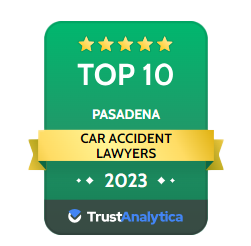As more and more self-driving cars are entering our streets, the situation begs the following question – “What is the self-driving car accident rate?” Let us help you by sharing statistics found in the most recent self-driving car accident reports.
Accidents Related to Disengagement Mode
A self-driving car can enter “disengagement mode.” While this term might appear a bit technical, in reality, it is not. The triggered “disengagement mode” forces the self-driving car to release full authority and control of the car’s movement to the human driver. At this point, the autonomous software stops controlling the vehicle in any way and gives the steering wheel back to the person in the driver’s seat.
The database contains disengagement reports from 2014 to January 2017. So far, 26 accidents have been recorded, 10 out of which occurred during disengagement mode. Six accidents happened when the autonomous mode was manually disengaged, while four happened when the Disengagement Mode was automatically triggered.
Self-Driving Car Traffic Accidents
As we have stated above, so far, there have been 26 recorded accidents. Sixteen of those accidents occurred when autonomous software had complete control of the vehicle. The database we inspected contains information about all significant self-driving car manufacturers, including Google, General Motors, Cruise Automation, Delphi, and Nissan.
By looking at the reports, there are four interesting facts that we have to point out:
- The drivers’ reaction times tend to increase proportionately to the distance traveled, which leads to the conclusion that people trust their self-driving cars more with increased mileage.
- The number one factor that leads to the manually disengaging autonomous mode is lack of trust.
- The likelihood of an accident occurring increases with more autonomous miles traveled.
- According to Mercedez-Benz and Google, the average reaction time is 0.833 seconds.
First Fatal Accident in a Tesla Electric Car With Autopilot Connected
The driver of the Tesla electric car died in an accident caused by a truck that crossed his path with the Autopilot system connected.
The mishap happened on an interstate when a tractor-trailer crossed paths with the Tesla Model S that went under the trailer, slaughtering the driver.
We Are Far From The Real Numbers
Before we jump to conclusions that self-driving car accident rates are meager, we have to address one more fact – logged mileage.
Let’s take the state of California as an example.
Back in 2013, there were about 50 self-driving cars versus 269 million conventional cars in this state. Self-driving cars logged 1.2 million miles, while classic cars logged several trillion miles during the same year.
The accident rates are not enough to offer the answer to the ultimate question – “Are self-driving cars safer than conventional ones?” We need to analyze more factors and get more data before we can answer such an important question.
Do I Qualify For Self Driving Car Accident Compensation?
Those car accidents can be highly traumatic and sometimes even life-altering. Besides seeking out your insurance claim to cover your losses, you may be eligible for additional compensation if you are not the responsible party.
If you weren’t the responsible party in the accident, you can file a lawsuit and receive compensation for your injuries. This compensation could cover your medical expenses, lost wages, car repair expenses, and any other damage you sustained in the accident.
When Can You File a Lawsuit After a Self Driving Car Accident?
Just with any other kind of lawsuit, there’s a specified timeframe for filing a car accident lawsuit. Every state has its statute of limitations, that is, a deadline for filing a lawsuit and taking a case to court. For instance, in Texas, you have two years to file a lawsuit, starting from the date of the accident.
However, filing a lawsuit immediately after the accident will help you get your life back in order faster. If you choose to file a case immediately, you can get compensation quicker to cover all your expenses and recover any losses.
How to File a Self Driving Car Accident Lawsuit
If you decide to file a lawsuit after a car accident, there are several stages you need to go through.
File a Car Accident Complaint
First, you need to file a complaint with the court, which will consist of all the information regarding the accident, that is, how it happened and what damages it caused.
Inform The Defendant
Next, you’ll need to inform the defendant about the lawsuit and wait for their pending response. You may reach a settlement at this stage, but the defendant may deny your allegations and choose to go to trial.
Get a Self Driving Car Accident Attorney
You can file a lawsuit without a lawyer. Still, it’s highly recommended that you hire one, as they can help you obtain the necessary evidence of liability and damages. They can help you win the case and get the compensation you deserve.
Joe I. Zaid & Associates will fight to help you recover compensation and all your financial losses. We have years of experience in the field and can help you quickly get your life back in order. If you’ve been in a car accident, don’t hesitate to contact us for a free consultation.




